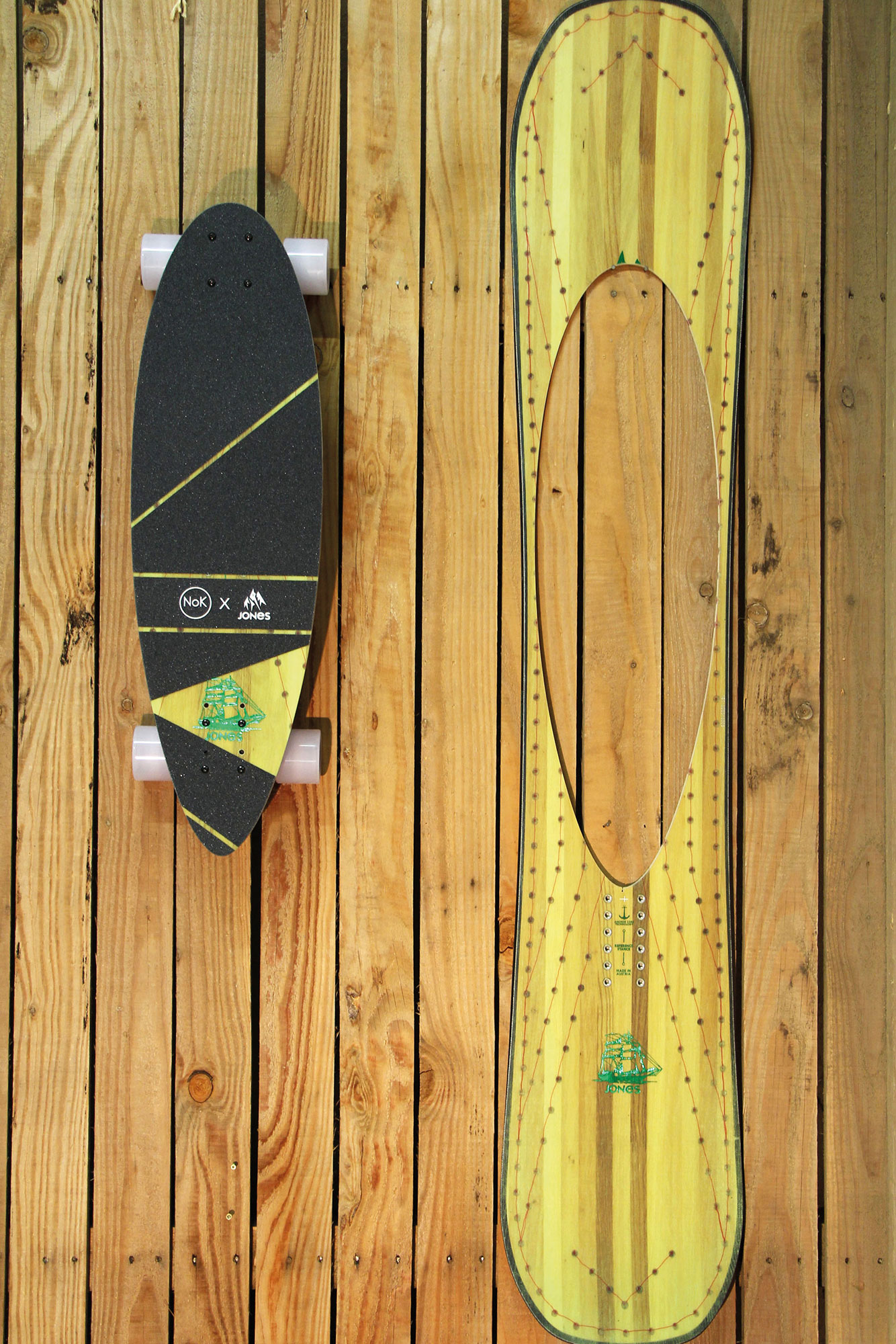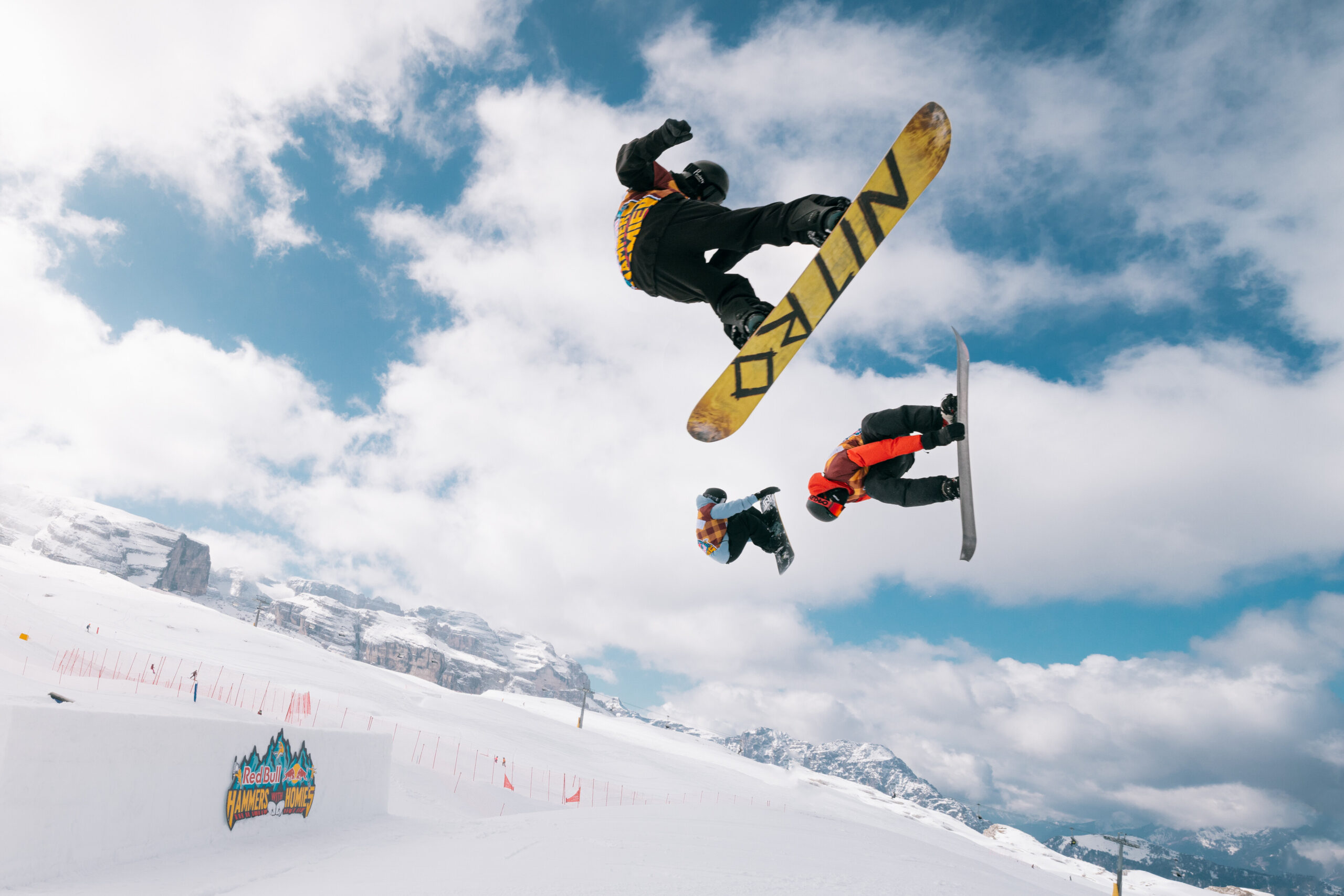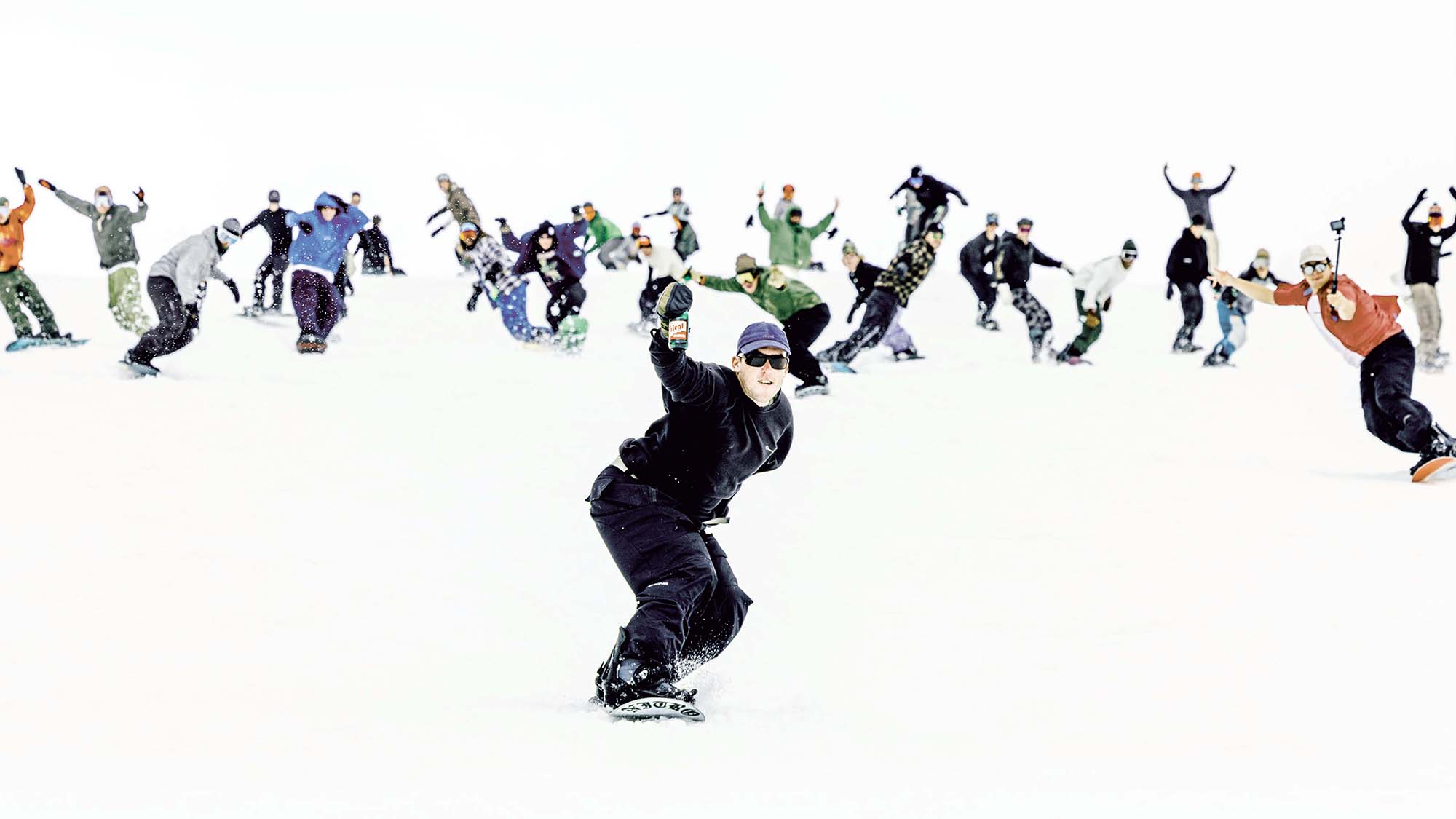Jones + NoK Skateboards
The second life, on the roads, of a snowboard


Any production cycle, no matter how efficient, managed and optimized it is, is always subject to some variability. A reality common to all manufacturing companies is the fact that production processes can generate waste, waste that can be contained but never completely zeroed out. And this is also the case for companies that produce snowboards. In Jones, for example, quality controls help eliminate rotten apples during production, but it is inevitable at various stages of the process to come across a small percentage of cosmetic or structural defects. In the first case, the board is labeled “Blem” and sold at a discounted price. In the second case, when the defect is structural, such as excessive rocker or a defective insert, the board is marked “Third,” cut in half and thrown away. Seen as an inevitable waste of the production cycle.
But a company like Jones can hardly claim to be alone in this scenario. Every snowboard factory, worldwide, generates waste boards that need to be disposed of giving rise to different contexts and impacts. Something Jones analyzed very well, with a five-part story revealing the carbon footprint of his own board.
No one, of course, likes to throw away material, but until now there has never been a consistent outlet for recycling structurally defective snowboards. This was taken care of by Adrien Reguis and Vincent Gelin, who as engineers and designers in companies in the industry have experienced this problem firsthand. After years spent on prototypes, factory rejects and warranty returns, they decided to do something about it: found NoK, a company based in Grenoble, France, specializing in the production of skateboards.


“Working in the industry has opened our eyes to the amount of defective boards being thrown away,” Vincent says. “Boards that are still very interesting technically and graphically, but because there is no solution to recycle them, they end up in the trash. Seeing this waste season after season made us sick.”
The decks, machined using a numerically controlled bench, are fitted with a new grip, trucks, and wheels to create a unique, high-performance surfer. 1364 pieces have been made so far, saving 34,100kg of CO2. It is the latest round of upcycling for a snowboard that would otherwise end up in some landfill. “Recycling is one of the best ways to give a discarded product a second life,” Adrien says. “By drawing on these neglected raw materials, we reduce our consumption and avoid further waste.” The flex of a snowboard determines which shape of skateboard will be cut out. With a soft snowboard, NoK will make a 66cm fish cruiser. With a rigid one, a 78cm surf cruiser or an 86cm longboard. Decks are cut from the center of the board so as to preserve the original graphic and artistic legacy.
“The beauty of upcycling lies not only in its positive environmental impact. Upcycling allows for truly unique, limited-edition products, as the design of each skateboard depends on the graphics and history of the snowboard from which it was cut.” Adrien concludes. And come to think of it, each NoK skateboard is really a unique piece of functional art.




